2022 Ford Maverick Vs. 2021 Ford Ranger: How Do Their Interiors Compare?

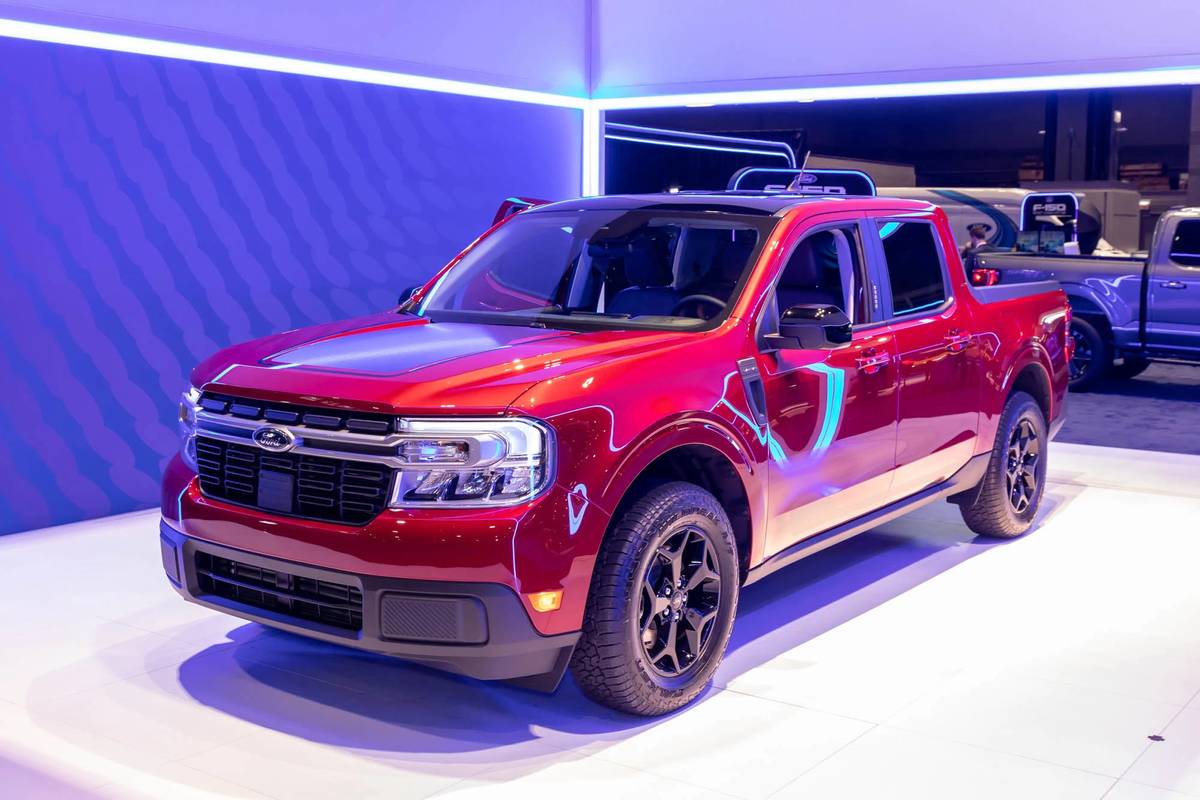
The truck segment is booming, and Ford is getting back into a part of the market it had previously abandoned with the debut of the 2022 Maverick compact pickup. It’s not your typical compact truck, though, as it has a standard hybrid drivetrain that should get up to 40 mpg in the city, according to Ford, and a unibody construction rather than the body-on-frame layout used by most trucks. Despite the unconventional construction, the Maverick is still built to work with a maximum payload capacity of 1,500 pounds, which is actually more than the payload rating of our long-term 2021 Ford F-150 hybrid, which is 1,362 pounds.
Related: More Chicago Auto Show Coverage
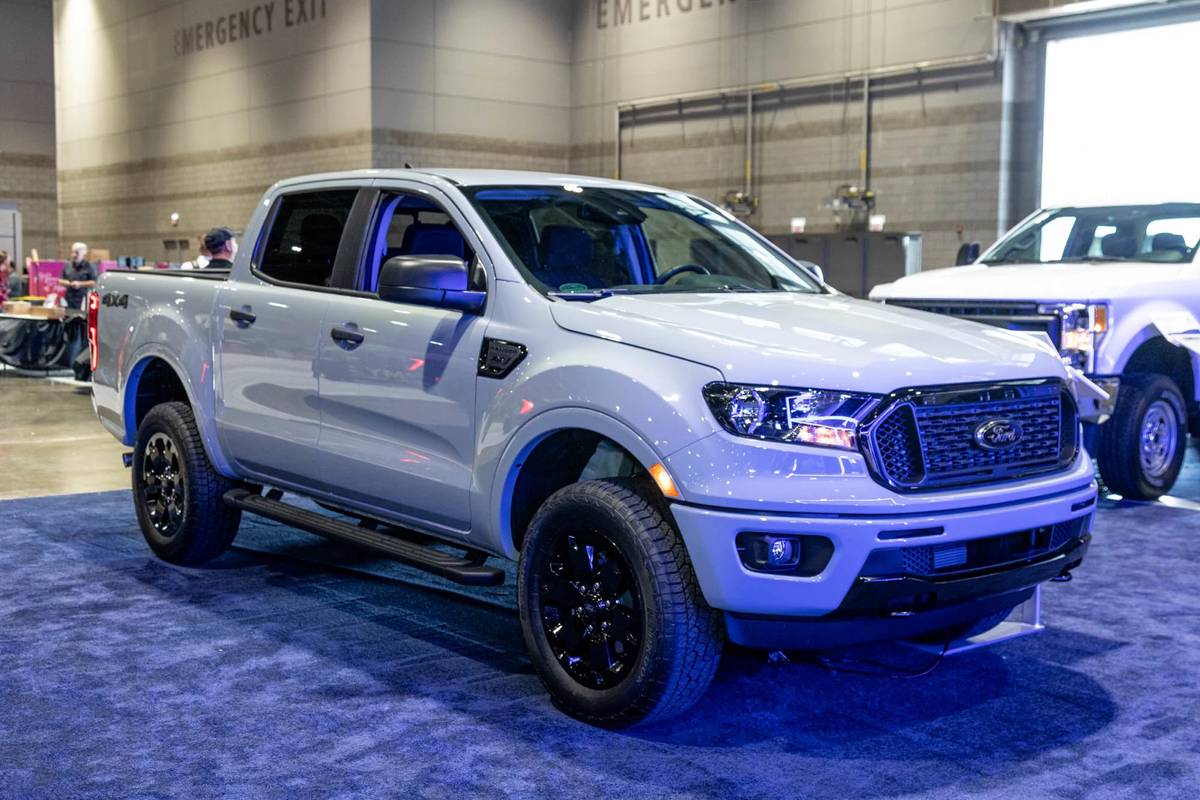
We got our first in-person look at the Maverick at the 2021 Chicago Auto Show and came away impressed with the little crew-cab pickup, so much so that we gave it our Best in Show award. We were curious to see how it compared with Ford’s next-larger truck, the mid-size Ranger, so we checked out the interiors of both at the show. Here’s what we learned.
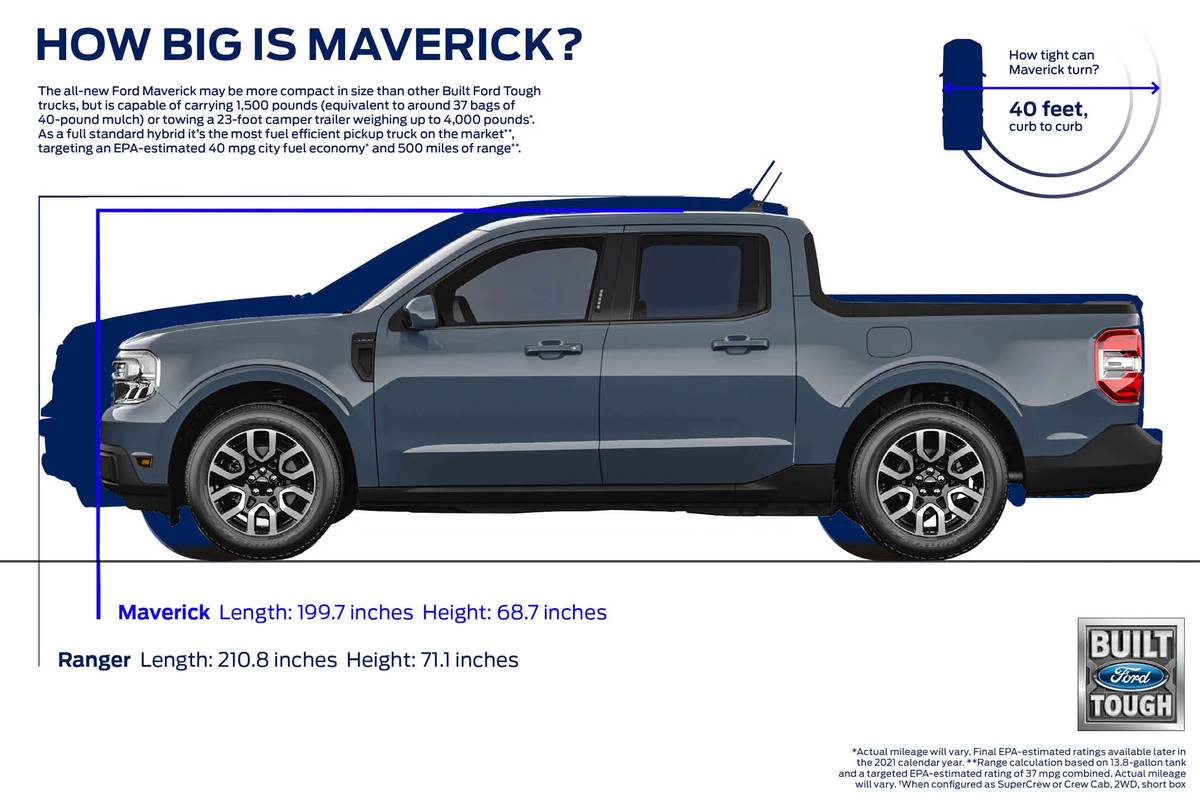
From the Driver’s Seat
Just getting into the Maverick is considerably different from the Ranger; you step down slightly to get into its driver’s seat, while the Ranger’s driver’s seat is a significant step up. This makes for different driving positions, with the Maverick’s resembling a compact SUV and the Ranger’s taller seating position feeling more like a truck. Ground clearance, however, is very similar between the two trucks: 8.6 inches for the four-wheel-drive Maverick and 8.9 inches for the regular 4WD Ranger (the Ranger Tremor has 9.7 inches of clearance).

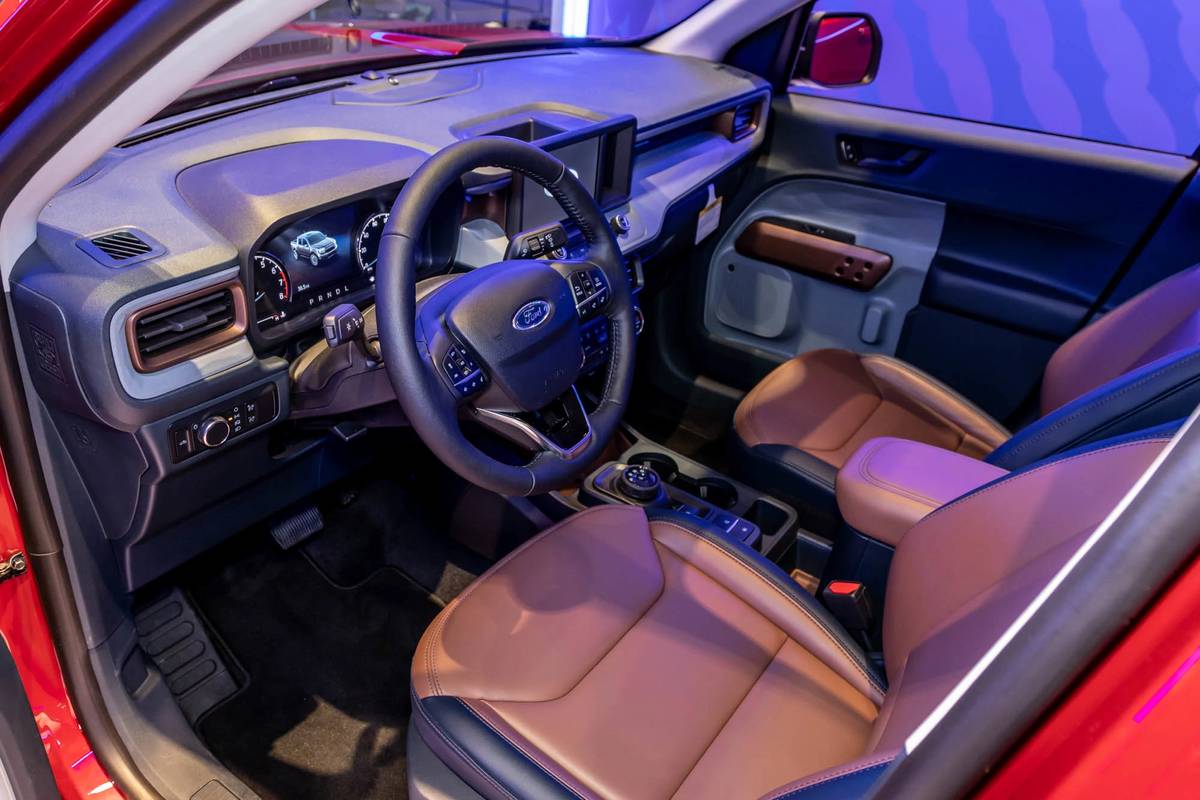

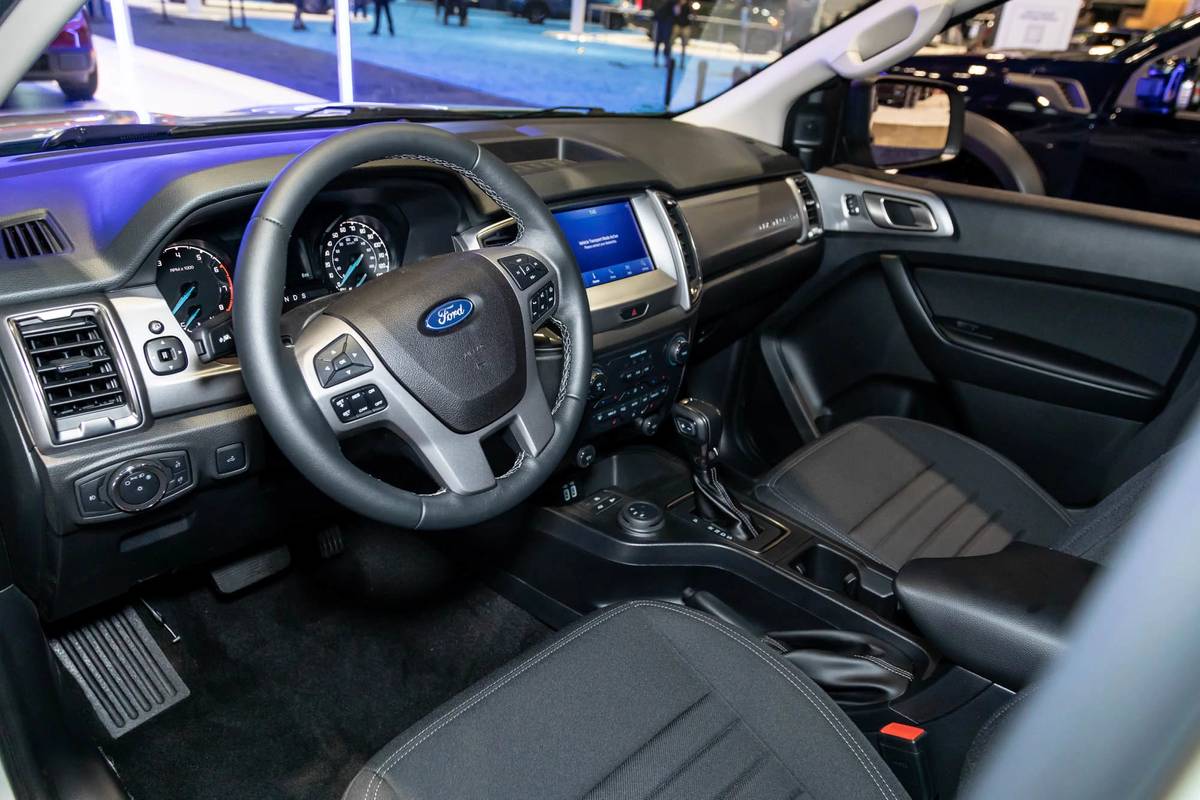
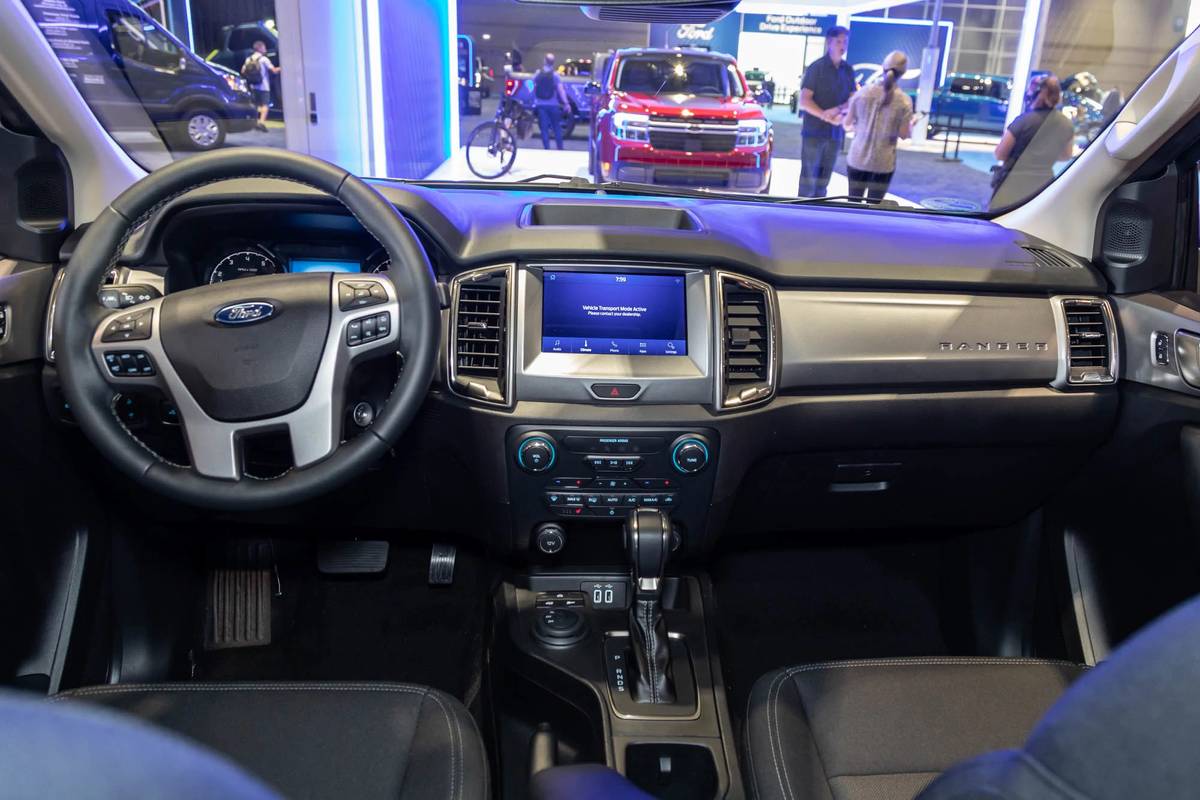
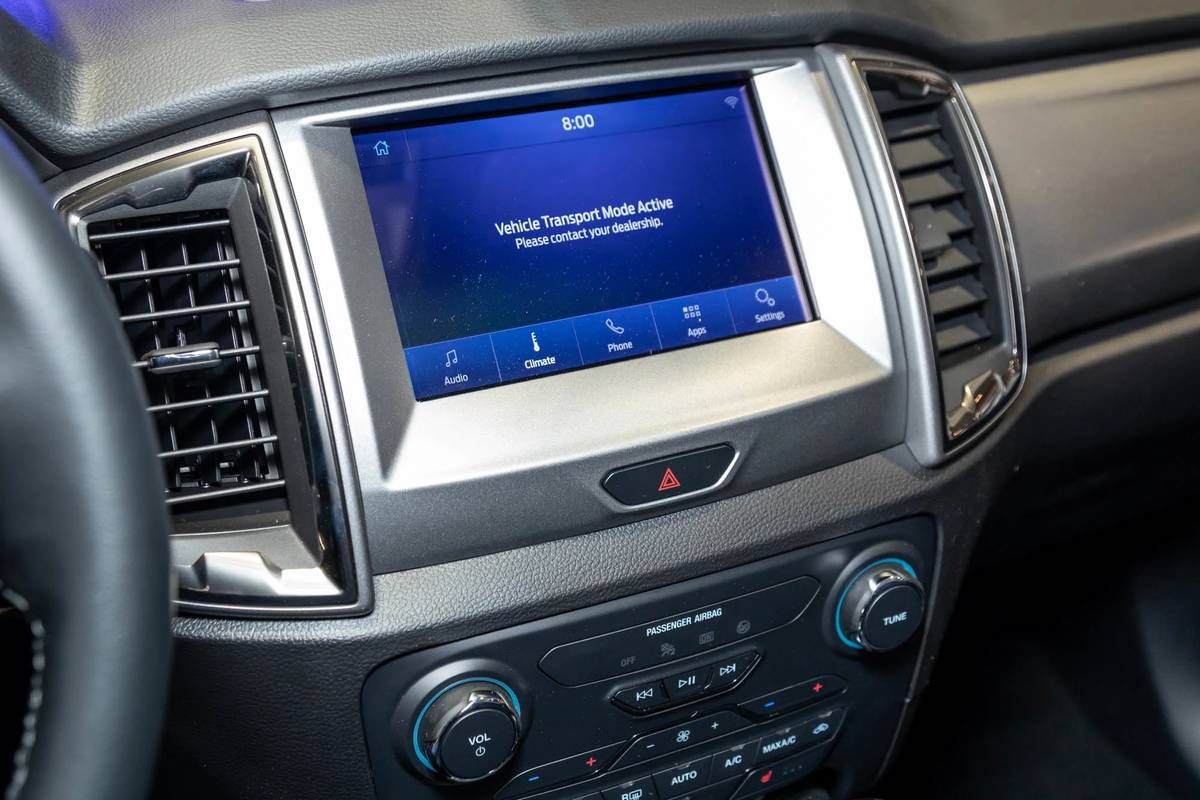






From the Backseat
The Maverick is nearly a foot shorter overall than the crew-cab Ranger, with some of the difference due to its smaller cargo box, which is about a half-foot shorter. Even though its footprint is smaller, the Maverick’s rear seating area is actually more comfortable than the Ranger’s.
For one, the Maverick’s rear bench seat manages to avoid the knees-up feel you get sitting in the Ranger. The Maverick’s rear seat also has a stadium-style design, which improves passenger visibility, but it doesn’t come at the expense of headroom thanks to a scalloped headliner section above the backseat. Legroom isn’t much different between the two trucks — my shins were touching the back of the driver’s seat in both — but the Maverick is more accommodating overall.

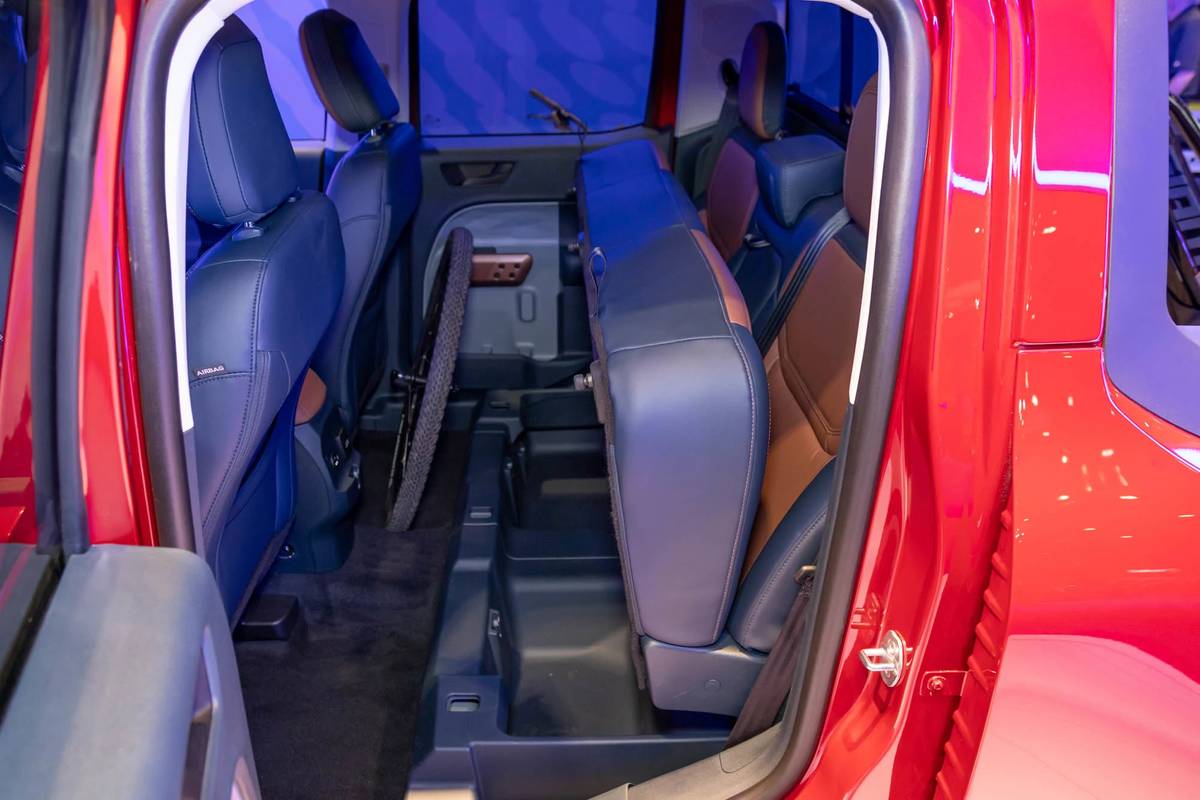
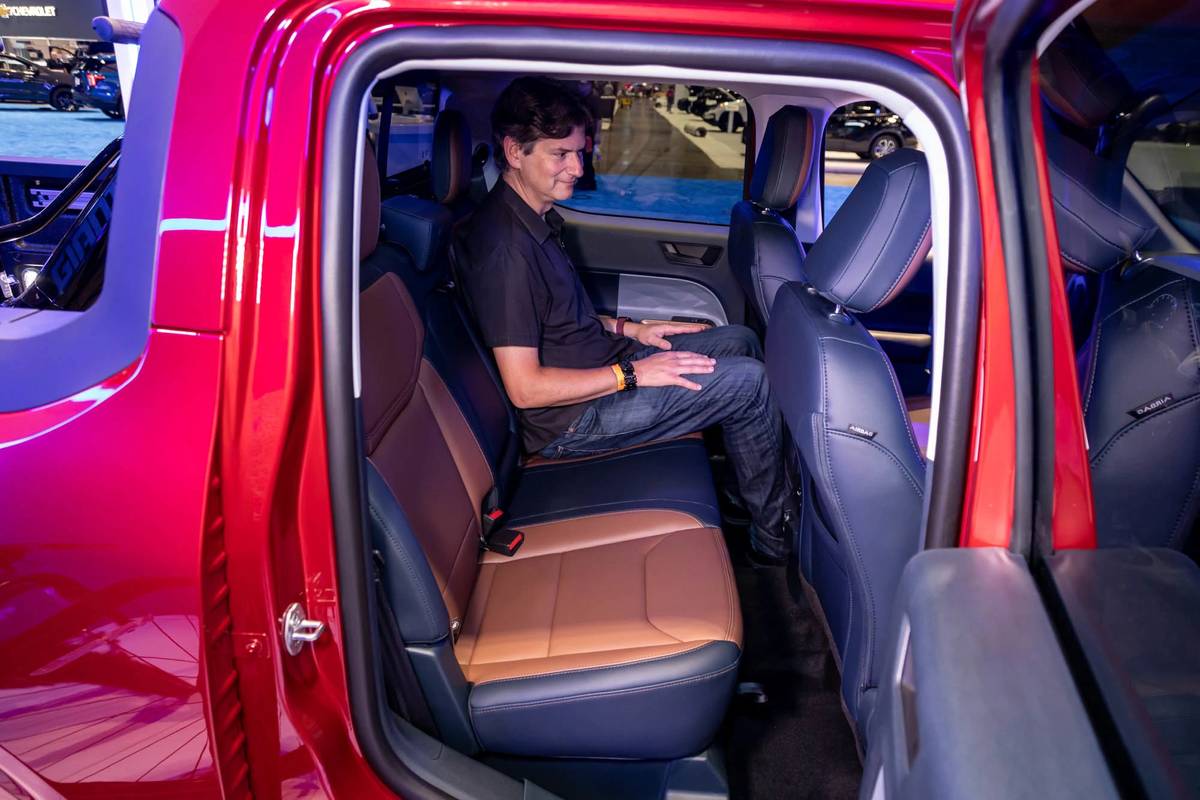
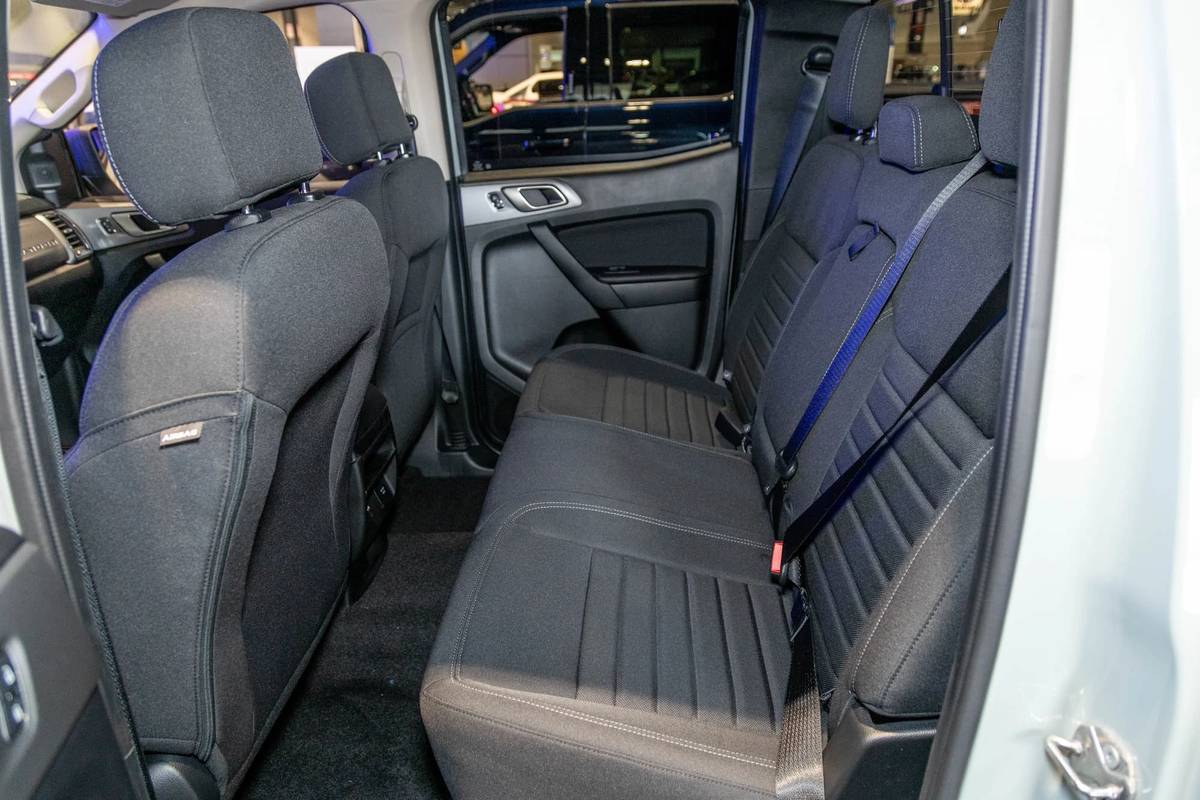
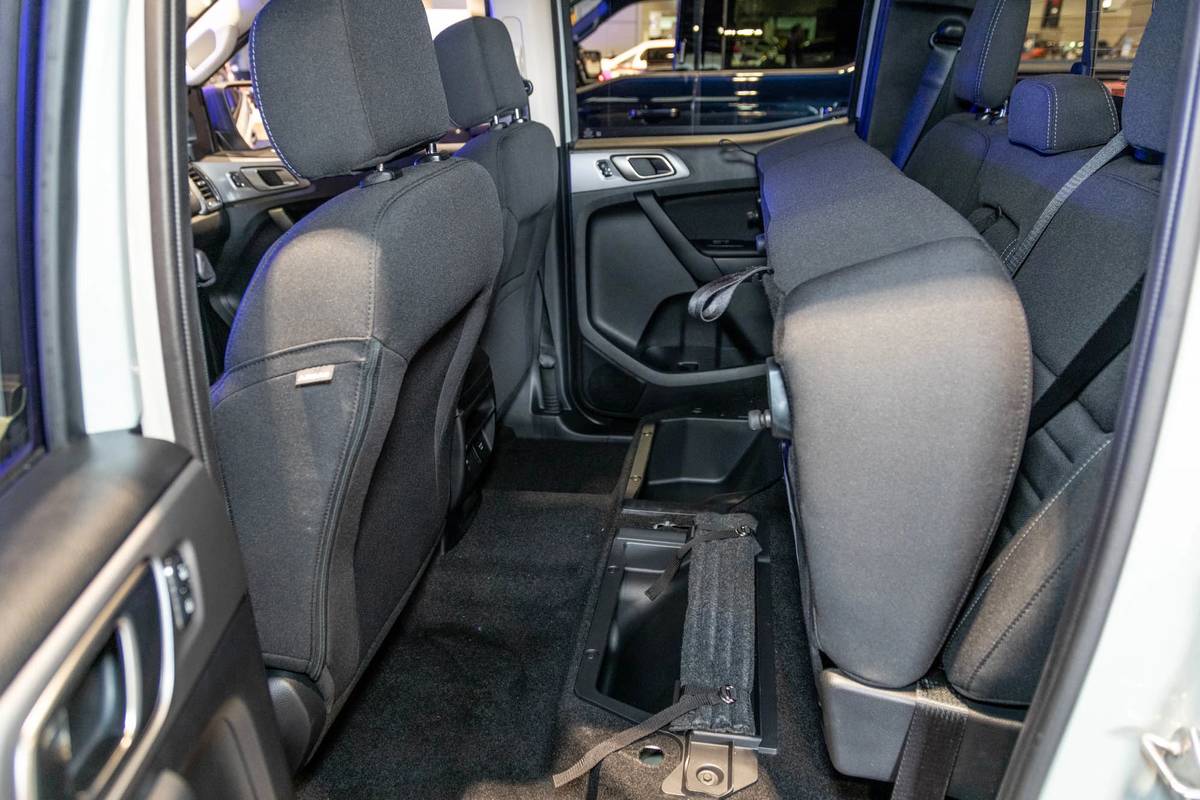
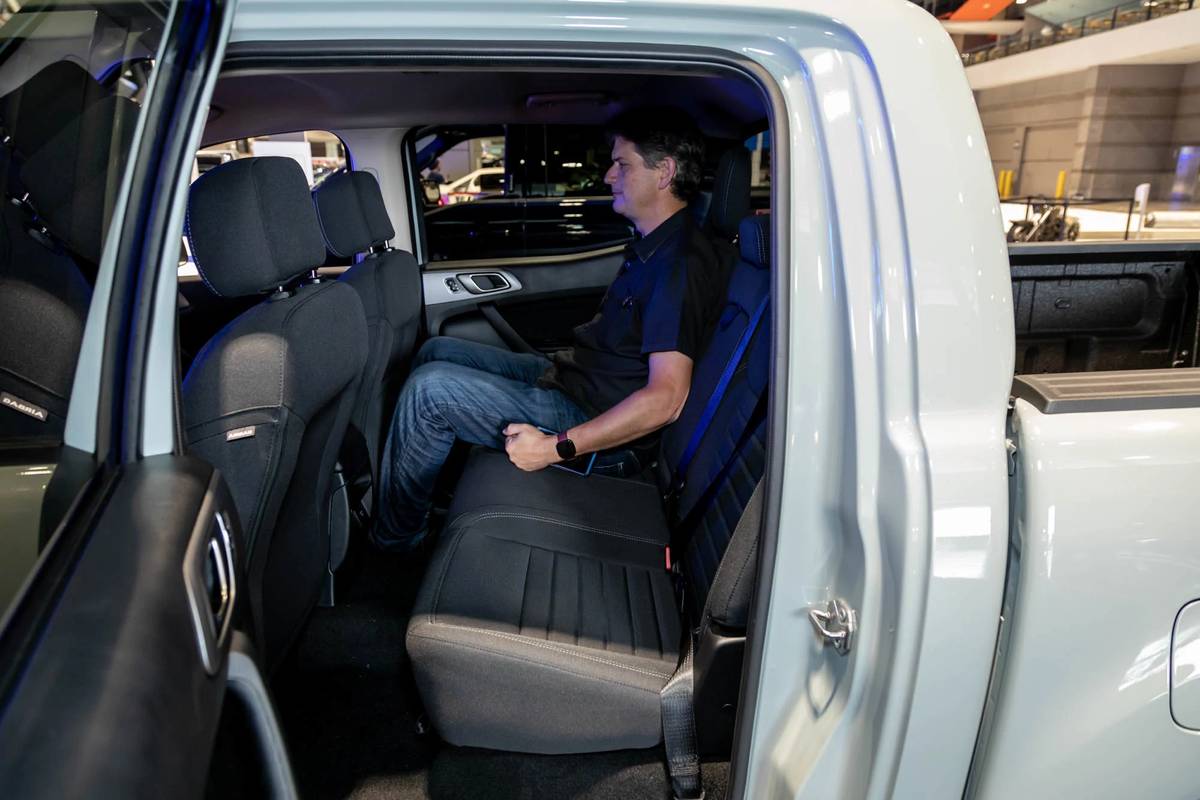






Interior Storage
The interiors of these two trucks are worlds apart, with the Maverick featuring a modern, distinctive style compared to the Ranger’s more traditional look. The designs have functional differences, too, with the Maverick featuring a front center console with a variety of subdivided storage areas in addition to a conventional storage bin under the front center armrest, which the Ranger also offers. The Maverick also has a high-mounted bin beside the dashboard touchscreen, and there are new door-storage areas that can hold a 1-liter water bottle, according to Ford.
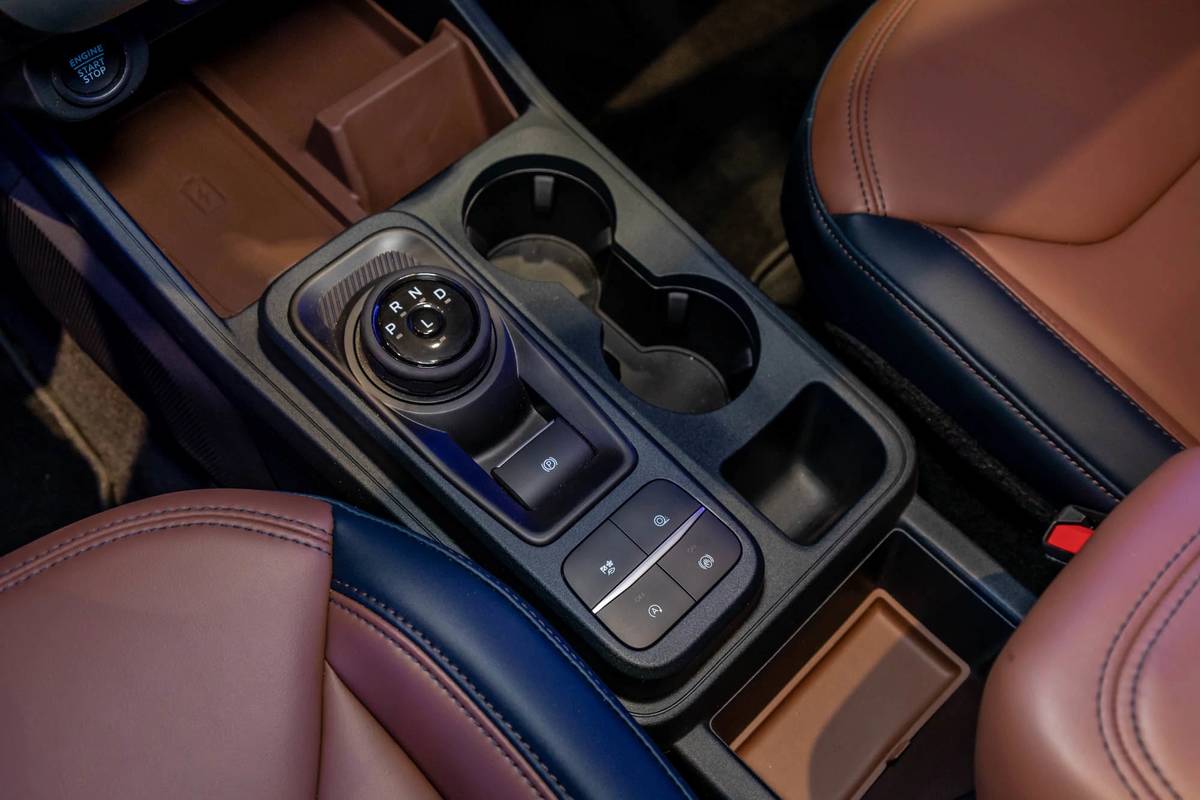
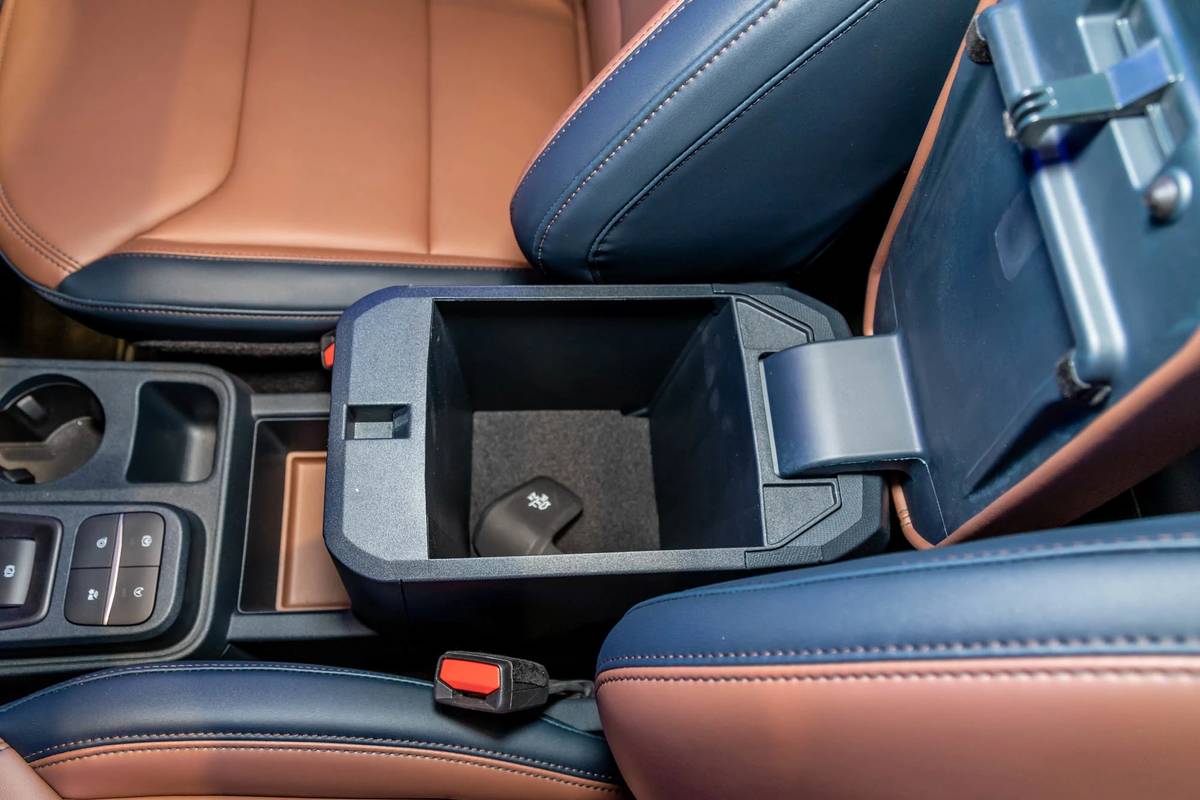
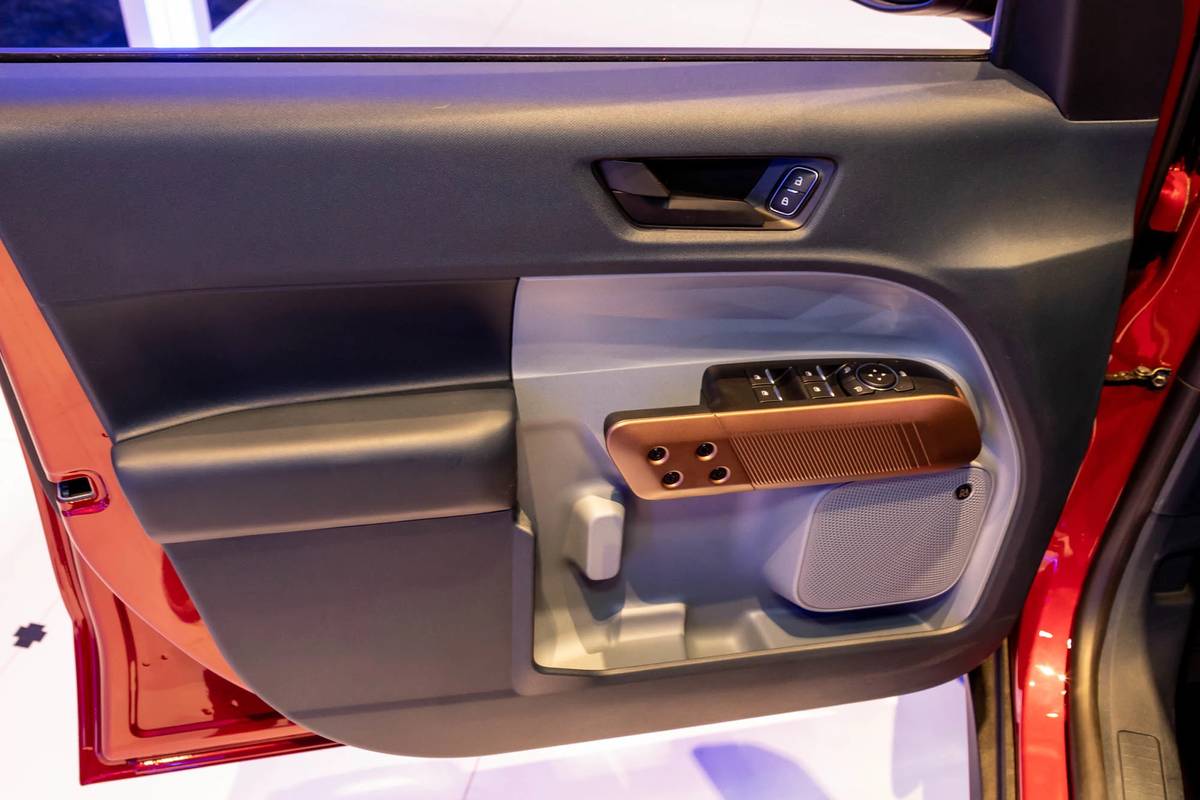
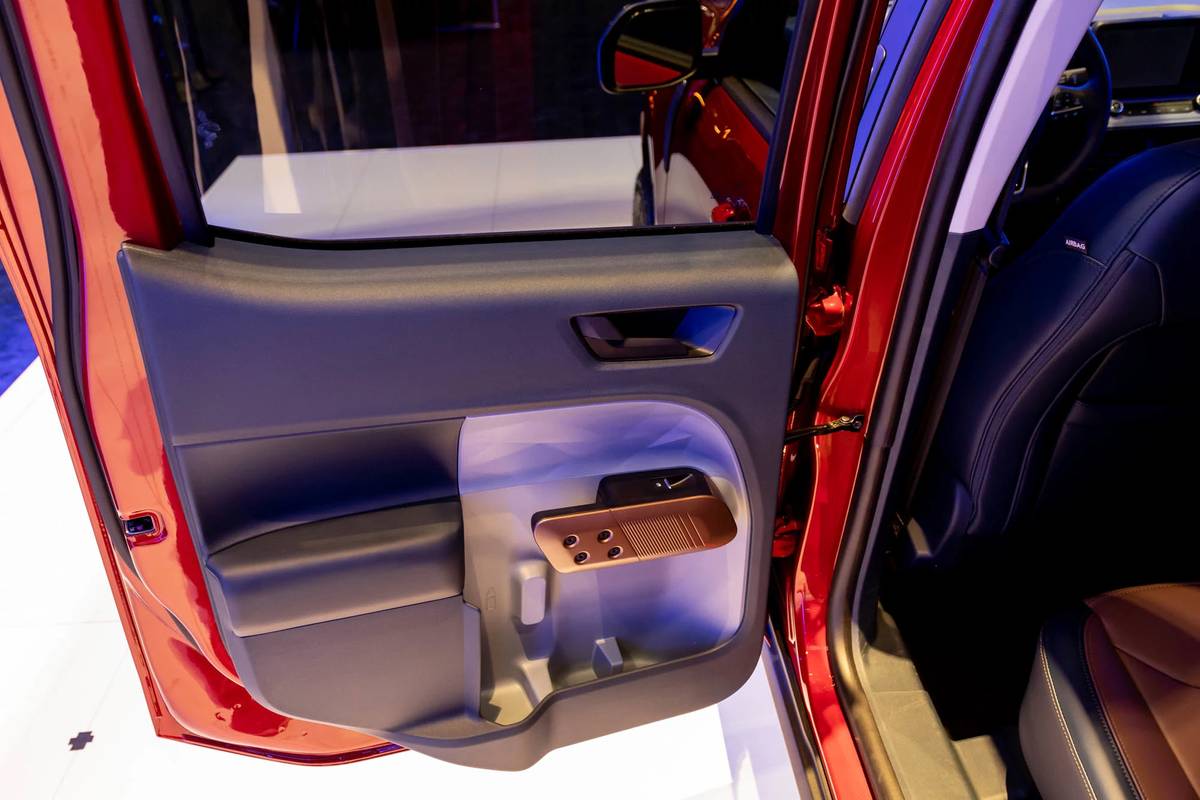

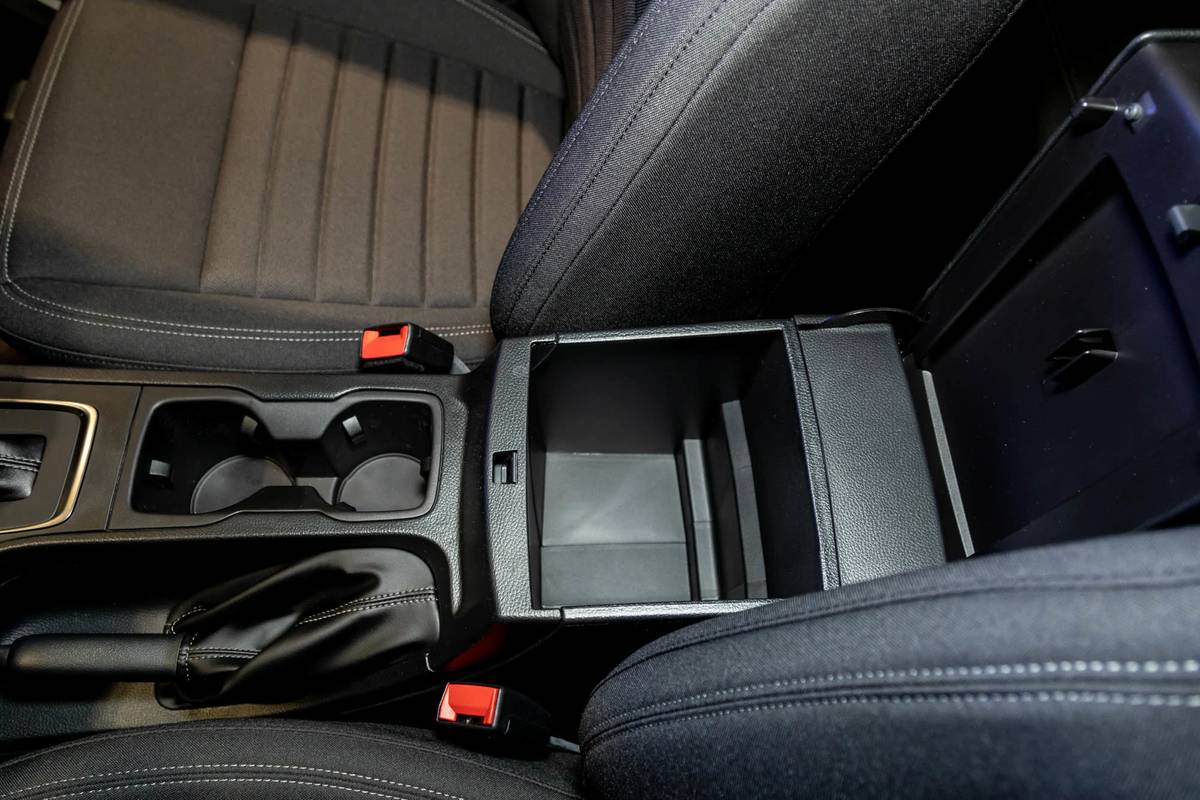
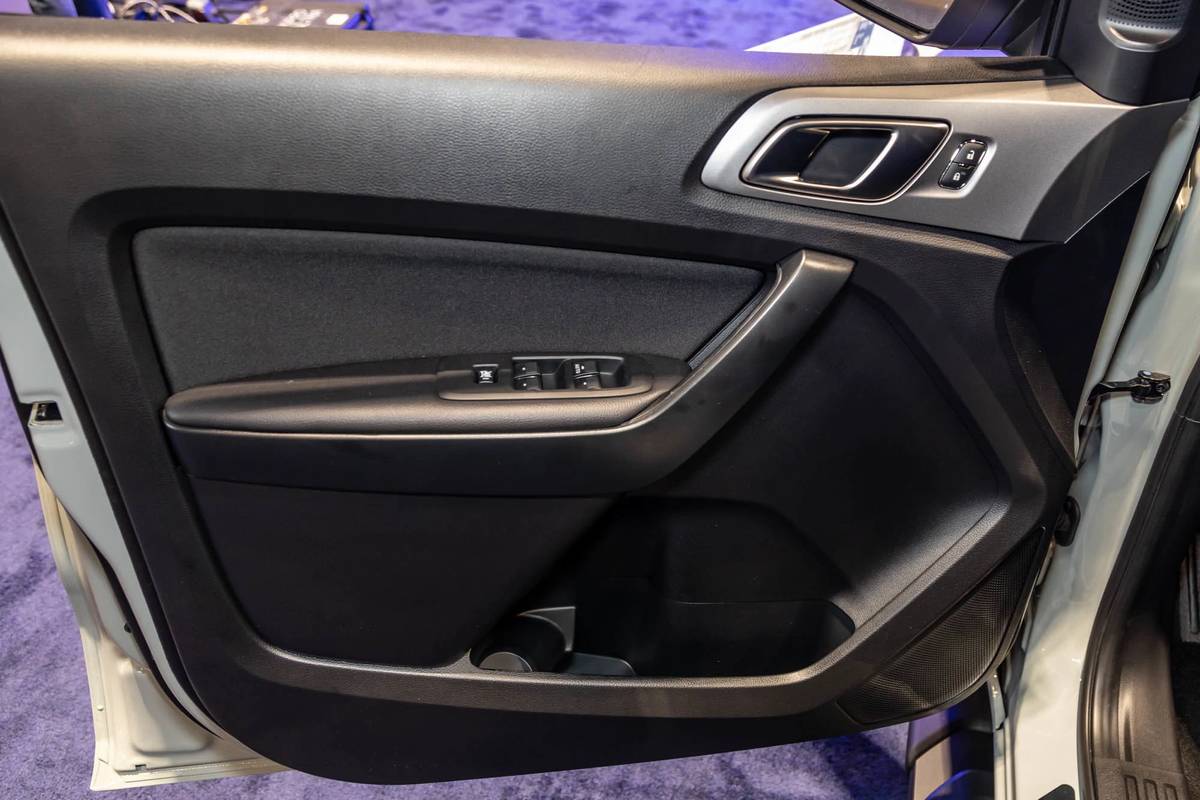
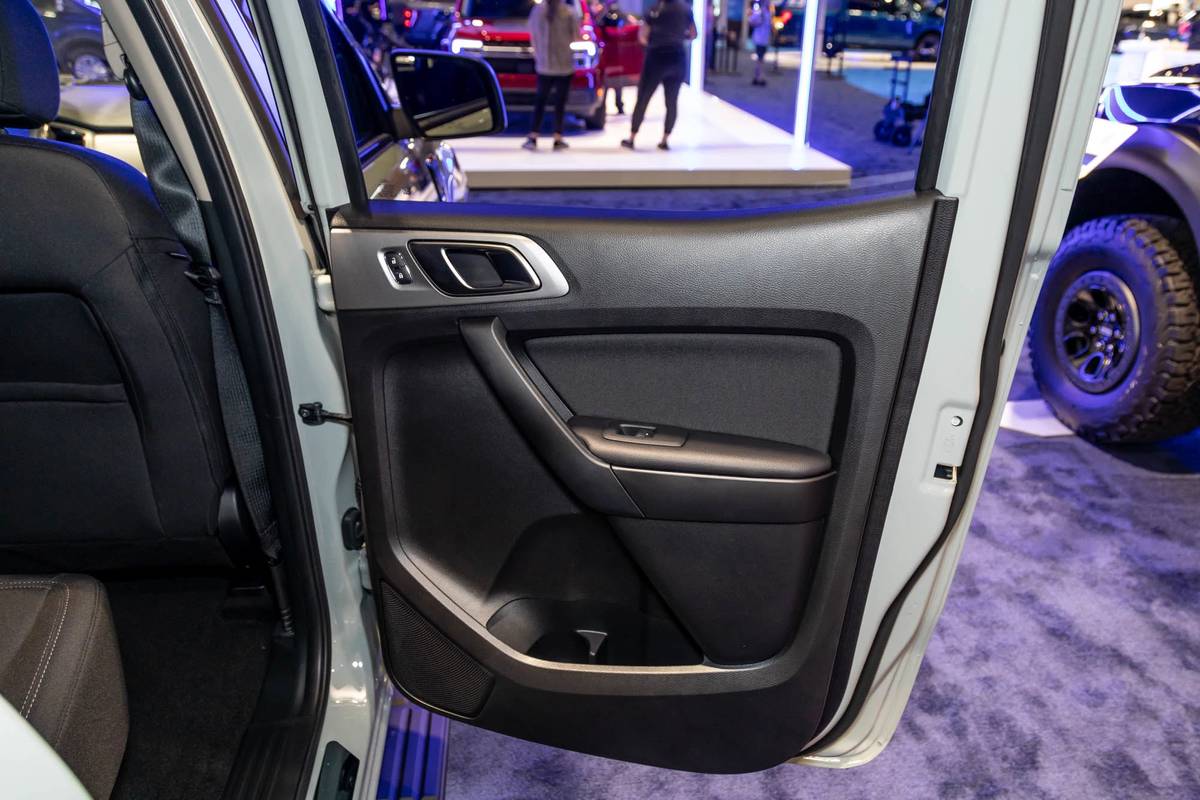








More From Cars.com:
- 2022 Ford Maverick Pricing Starts at $20,000, But What Does That Include?
- Up Close With the 2022 Ford Maverick: Just Being a Compact Pickup Is Enough
- Hyundai Santa Cruz Starts $3,685 Over Ford Maverick, But What More Do You Get?
- Shop for a 2021 Ford Ranger
- Shop for a 2022 Ford Maverick
The Verdict
Which of these small trucks will work better for you? The answer depends on what you want to do with them. The Ranger’s 7,500-pound maximum towing capacity is significantly greater than the Maverick’s standard 2,000-pound and optional 4,000-pound ratings, and its cargo box is bigger. The Maverick’s cabin is more comfortable, and it’ll likely offer a more car-like driving experience thanks to its unibody construction. That might not appeal to some truck buyers, but it could to other shoppers who haven’t considered a truck before.
Related Video:
Cars.com’s Editorial department is your source for automotive news and reviews. In line with Cars.com’s long-standing ethics policy, editors and reviewers don’t accept gifts or free trips from automakers. The Editorial department is independent of Cars.com’s advertising, sales and sponsored content departments.

Mike Hanley has more than 20 years of experience reporting on the auto industry. His primary focus is new vehicles, and he's currently a Senior Road Test Editor overseeing expert car reviews and comparison tests. He previously managed Editorial content in the Cars.com Research section.
Featured stories










